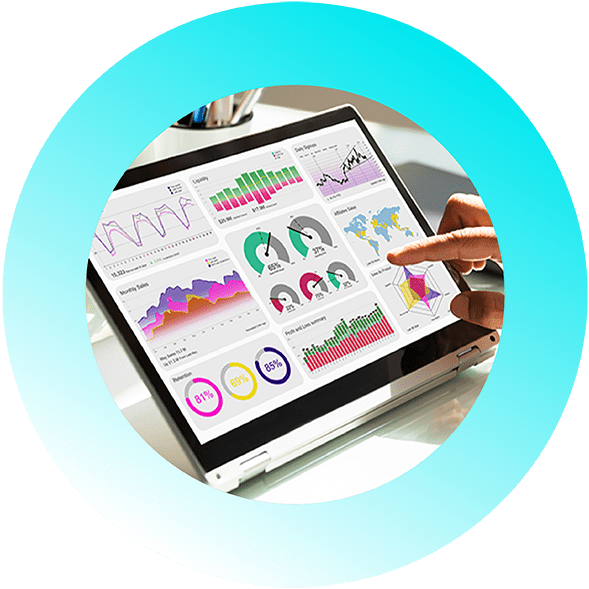Healthy Living

Your trusted Health & Life Science technology transformation partner
Fujitsu supports Health and Life Science customers on their journey toward digital health so that together we can improve health outcomes for citizens. We are committed to the Quadruple Aims described below that optimise health system performance. Our Digital Transformation Capabilities are where our strengths lie in providing innovative and differentiated technology solutions that deliver value to our customers. Explore each capability to understand which solutions best meet your needs. Whether it is discovering new medicines, administering them to patients or anything in between, our technology is used by health systems all around the world to improve equity and access resulting in better health outcomes.
Patient Experience
- Improve access to services
- Reduce waiting times
- Improve voice and advocacy
- Patient health needs met
Population Health
- Improve health outcomes
- Equity of access
- Improve public health
- Improve chronic condition management
- Reduce disease burden
Workforce Satisfaction
- Decrease clinical administration
- Improve productivity
- Improve safety and quality
- Improve recruitment and retention
Value for Money
- Reduce waste
- Cost control in service delivery
- Reduce avoidable hospital admissions
- Improve choice of care setting
- Return on innovation investment
Capabilities that Drive Digital Transformation

Data Driven Innovation
Innovation is at the heart of health service reforms. Data is at the heart of identifying opportunities and evaluating reforms, and embedded in the reforms themselves by connecting and informing care utilising analytics insights and artificial intelligence.

Enhanced User Experience
Understanding the healthcare experiences that citizens expect has become critical to achieving positive health outcomes. Workers who are not given digital tools are more likely to leave or complain that they cannot deliver quality care.

Digital Health Enablement
Public Health services and corporate health providers operate at scale caring for the lives of many millions of patients. They typically employ large ICT teams to ensure that the clinical workforce have 24/7 access to resilient and robust systems so they can focus on patient care.

Smart Hospitals
Health services are transforming digitally. Hospitals experience operational pressures to increase productivity. This means they need to increase the number of patients they see without increasing their service costs.

Life Science
The challenges society faces to evolve and grow sustainably cannot be overcome by the thinking that brought us to where we are now. All the stakeholders in the Life Science ecosystem including industry, government and academia are needed to focus on the wicked problems that science must resolve for humanity.
-
 Supporting global pharma with local vision, strategy and technology
Supporting global pharma with local vision, strategy and technology
-
 Fujitsu Cloud Managed Service (FCMS) – Australian Government Health
Fujitsu Cloud Managed Service (FCMS) – Australian Government Health
-
 Securing public confidence in Health data
Securing public confidence in Health data
-
 Enterprise Image Repository
Enterprise Image Repository
-
 Evolution of Enterprise Data Management in Health
Evolution of Enterprise Data Management in Health
-
 Endpoint Security Assurance for Critical Health Services
Endpoint Security Assurance for Critical Health Services
-
 Augmented Reality for Kids’ Cancer
Augmented Reality for Kids’ Cancer
-
 CyberDefence solution secures Health Service
CyberDefence solution secures Health Service
-
 Digital Health Enterprise Interoperability Platform
Digital Health Enterprise Interoperability Platform
-
 Empowering Hospital Managers with Power BI and Azure Data Services
Empowering Hospital Managers with Power BI and Azure Data Services
-
 Mission Critical Australian Government Health Technology
Mission Critical Australian Government Health Technology
-
 Children’s Hospital Data Centre Relocation
Children’s Hospital Data Centre Relocation
-
 Cloud Modernisation for New Zealand Government Health Agency
Cloud Modernisation for New Zealand Government Health Agency
thoughtleadershipThought Leadership
-
 AIDH & Fujitsu AI Adoption + Survey Results + Learning Lab
AIDH & Fujitsu AI Adoption + Survey Results + Learning Lab
-
 Implementation of conversational and text-based generative AI in a customer service system
Implementation of conversational and text-based generative AI in a customer service system
-
 Tech Debt - A Hybrid Cloud Journey Board Game
Tech Debt - A Hybrid Cloud Journey Board Game
-
 Upgrading private health Wi-Fi system to enable Virtual Connected Care
Upgrading private health Wi-Fi system to enable Virtual Connected Care
-
 Improved access, productivity and UX with identity and access management (IDAM)
Improved access, productivity and UX with identity and access management (IDAM)
-
 Cloud adoption readiness research report
Cloud adoption readiness research report
-
 Whitepaper: The Fujitsu Virtual Connected Care maturity model
Whitepaper: The Fujitsu Virtual Connected Care maturity model
-
 Humanising Healthcare
Humanising Healthcare
-
 Forrester's Report: HealthCare in 2030
Forrester's Report: HealthCare in 2030
Get in touch
Let us assist you in solving your business challenges.

